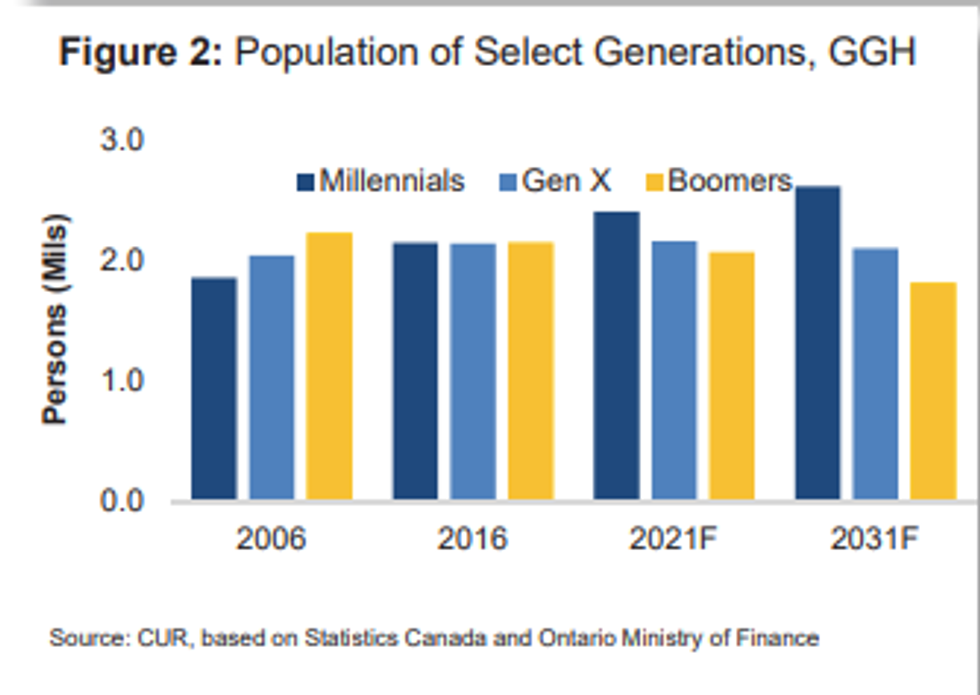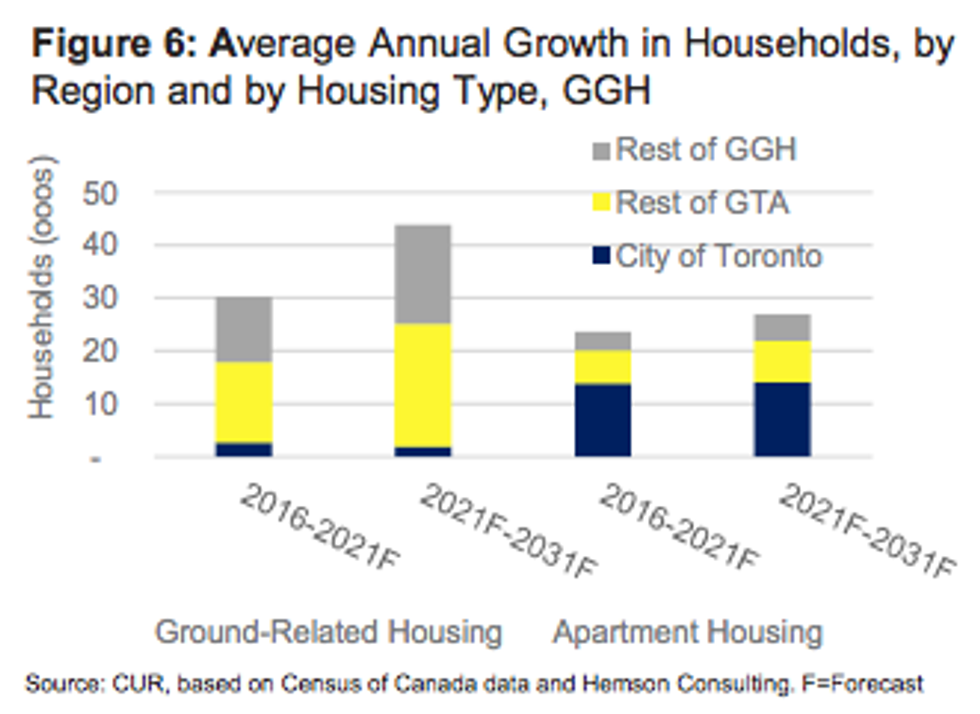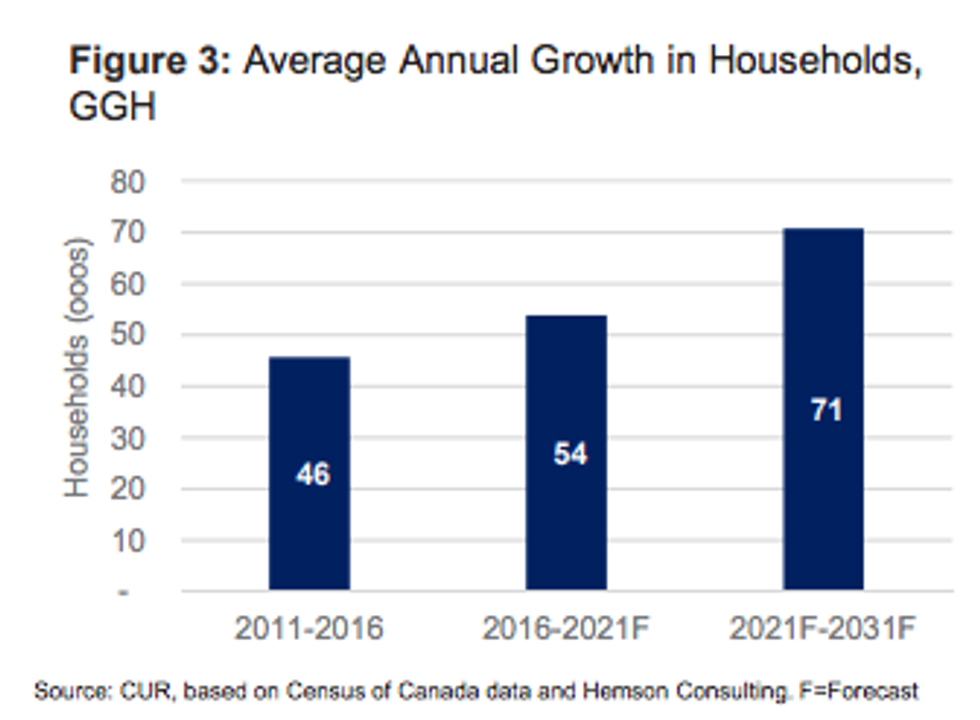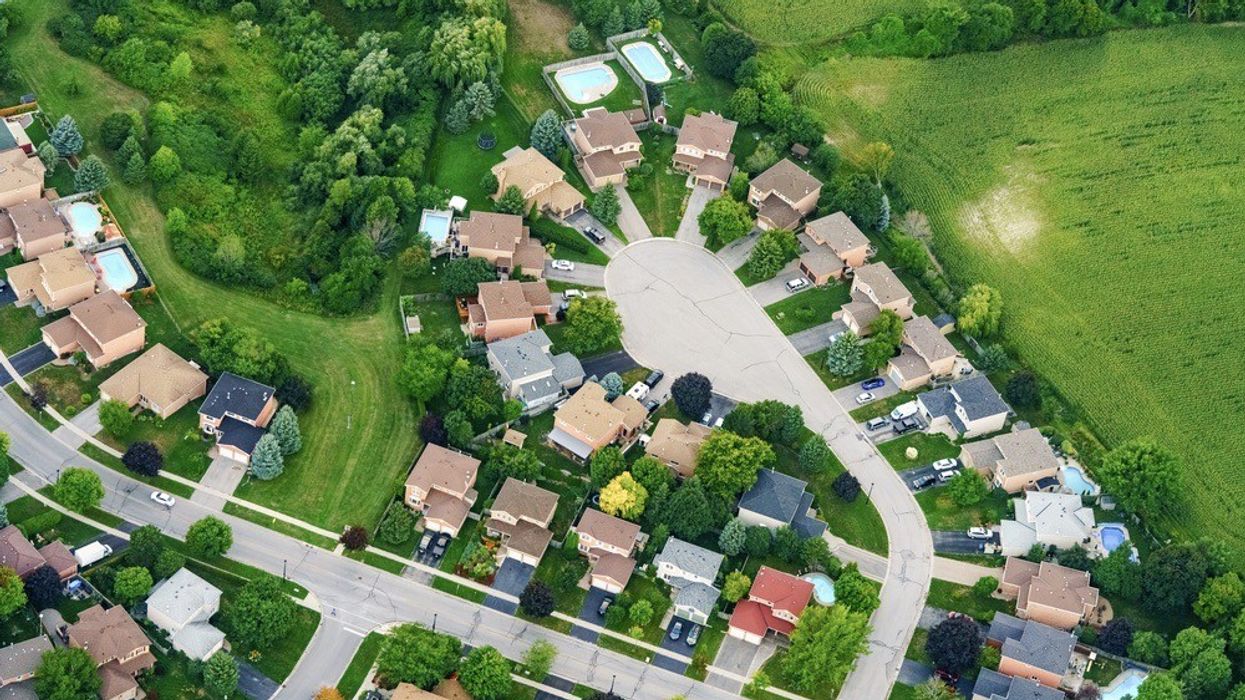We’ve reached the point where headlines about the red-hot, record-smashing real estate scene in the Greater Toronto Area (GTA) are no longer shocking.
It came as no huge surprise then, that this week’s Toronto Regional Real Estate Board (TRREB) market report revealed a continuation of the dramatic market trend, with the average sale price for all homes types across the GTA reaching the $1 million mark in February.
While the pandemic continues to wreak havoc on many industries, the GTA’s real estate industry is on fire – something facilitated by historic-low mortgage rates.
It turns out, however, the current fury-filled housing market may have more to do with demographics than COVID.
READ: Is This the Year the GTA Real Estate Bubble Bursts?
In the latest GTA Housing Market Pulse from Ryerson University’s Centre for Research and Land Development, Senior Economist Diana Petramala and research assistants Hannah Chan Smyth and Riley Malthaner show that the Millennials – now 25 to 40-years-old – are driving current market trends. As a result, we can expect a major growth in the number of households in the next decade.
The authors write that the strength and shifts seen in the GTA real estate market over the last year have actually been in line with their medium-term, non-pandemic expectations. These forecasts called for a notable move out of apartments and into ground-related housing in the suburbs.
Armed with cash stashed from years of living at home – Millennials live with their parents longer than both Baby Boomers and Generation X – and lucrative jobs, the Millennial demographic is snapping up ground-related housing in suburbia (after an inevitably bidding war, that is). While the pandemic may have acted as a catalyst for home-buying decisions amongst this demographic – especially when the need for more space became glaringly apparent – a surge in demand for ground-related housing in Toronto’s suburbs was “inevitable.”
The authors point to a 2018 CUR Report, supported by OREA, that demonstrated what the Millennial demand for GTA and Hamilton Area Housing would look like between 2016 and 2031. At the time, about 800,000 in these regions lived with their parents.

The authors expanded on this analysis and outlook to include the entire Greater Golden Horseshoe (GGH). Here, the Millennial demographic is the largest group of first-time homebuyers ever seen in the region – “even larger than the Boomers,” write the authors. They attribute this to an immigration wave that has been tilted towards Millennials.
“The expectations were that as this demographic aged, there was going to be a need for more ground-related homes and more households would leave the city of Toronto in search of ground-related housing, just as generations that came before them did,” the authors write.
“We forecasted that over the course of the next decade, the GGH would need to see a 60,000 increase in the creation of ground-related housing units from current levels just to meet Millennial housing needs. That housing shortfall is growing along with the Millennial demographic.”

And the result is an insanely competitive market that's increasingly out of reach for today's young professionals, especially those who weren't able to save for that down payment by living at home well into their 20s (or beyond).
The authors point to a forecast last year by Hemson Consulting Group for the Ontario Ministry of Municipal Affairs and Housing that corroborated their forecast that Millennials would live at home longer than did past generations. It stated that the resulting pent-up demand would be released between 2021 and 2031.
This would contribute a large increase in the number of new households across the GTA. Furthermore, those Millennials already on their own would move from renting apartments to ground-related homes that can aptly accommodate future families.
According to Hemson, 70,000 new households would be created per year between 2021-2031in the GGH – from 46,000 between 2011 and 2016 and 54,000 in the current five-year period. The report also called for a shift in household demand to areas outside of the Toronto confines and into other areas of the GTA. The proportion of new households opting for homes within the City of Toronto would fall to 20 per cent between 2021 and 2031, from 30 per cent in the previous decade.

“While underlying demographic demand was evenly split between apartments and ground-related housing in the last decade, Hemson expects demand for ground-related housing to be almost double that for apartments,” write the authors.
As for Toronto’s condos, the demand is expected to remain stable between now and 2031.
Those in the market for a ground-related suburban home won’t see these prices cool any time soon, say the authors. “Despite efforts by the province to get more housing of all types onto the market throughout the GGH, the new supply of ground-related housing is unlikely to increase enough to accommodate this surge in demand,” they write. “As a result, prices will continue to rise faster than household income and affordability will worsen.”
Thanks for the reminder.





















